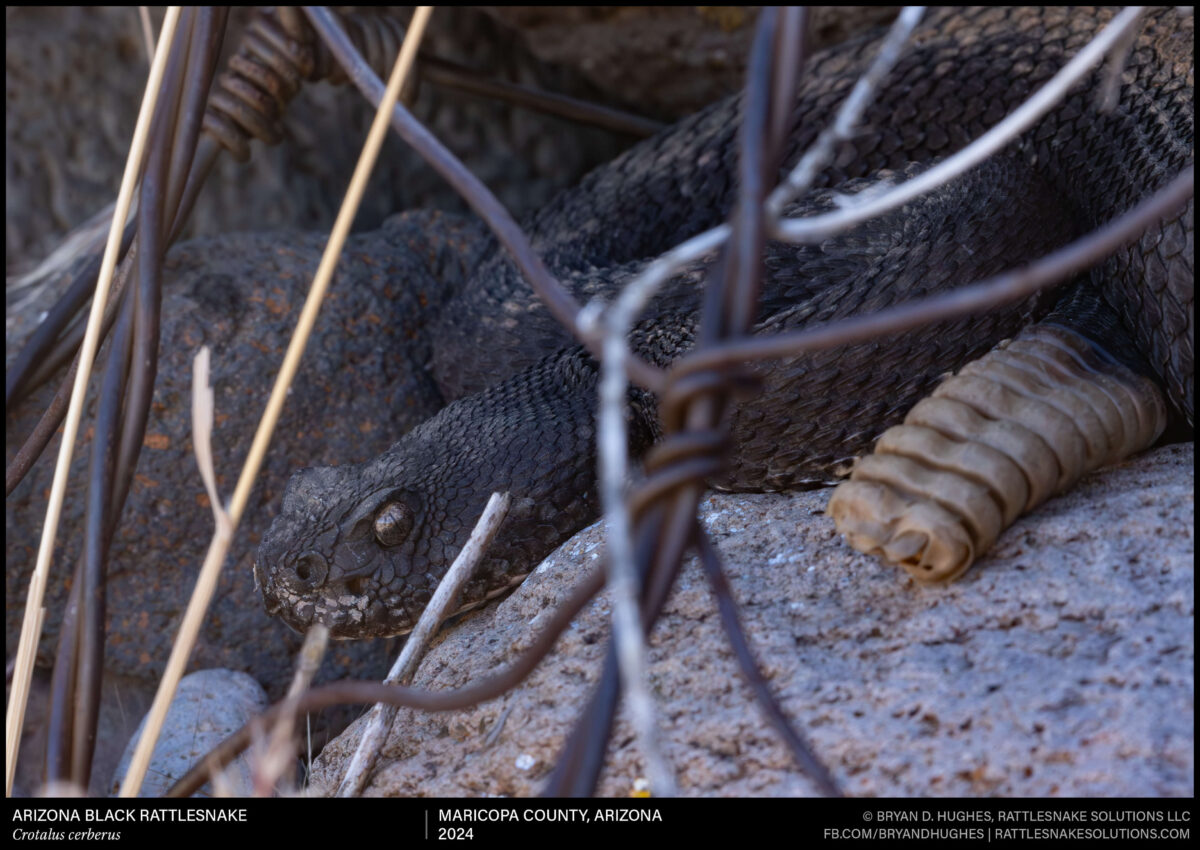A Western Diamondback Rattlesnake letting me know that it’s not a smart idea to come closer. This defensive behavior is often mischaracterized as aggression. While there are some cognitive gymnastics that could be done to force word choice, the misinterpretation of what these snakes are doing when in a pose like this often leads to the injury of both the animal and the person. Once a rattlesnake is seen, the danger is over unless the person chooses go approach it, ignoring these very clear signs.










